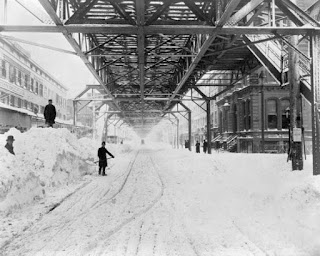 |
| Albertine Hannah Head Ston |
Maiden aunts, spinsters—often not used as a complimentary term. When I think of a maiden aunt, I think of a little old lady, who stays homes, keeps house, and takes care of her other relatives. In some ways that may describe my great great aunt, Albertine Hannah and in other ways it does not.
Obtaining information on single women is usually a challenge so I do not know a great deal about Albertine. Some of what I know about, Albertine, comes from census date. I know she was born in 1834 in Edgar County Illinois, near where Chrisman is today, was the seventh child of John M. and Charity (Mears) Hannah, and lived on her father’s farm. Her mother died in 1842 when Albertine was 8 years old. In 1850 she was living with her father, her three brothers, and two sisters. In 1860 Albertine was living with her father, and her niece, Charity Conrey, the daughter of her deceased sister, Nancy. When the Civil War began, both her father and her brother, John Wesley, enlisted. Her father fought for about three months, and then returned home, due to illness. He died in 1865. So far, Albertine looks like a pretty typical maiden aunt—living with her father, taking care of her niece, etc.
 |
| Hannah Farm Land |
However, in other ways she was unique. When I think about land sales in that period of time, I think of men selling land to other men. That was not true for Albertine. Over a period of 11 years, Albertine bought land five times all in Ross Township.. On March 11, 1851 for $1.00 her father sold Albertine 80 acres of land in Ross Township. In addition, by a mortgage on December 14, 1861 her father also sold Albertine an undescribed piece of land for $106. In February of 1861, for $700 Albertine bought land from James R. Watson and a year later, for $1000 land Bushwood Herrick sold her more land. In addition, in February 1861 Albertine sold land to James Watson. That land was also in Ross Township.
 |
| Hannah Plot |
I was able to obtain Albertine’s will. Most notable is her request that her real estate be sold and that $1200 of the proceeds be used to purchase a lot in the cemetery in Paris Illinois and to erect a monument for her father, mother, sister, Mary Sayres, and herself. The remainder of the money from her real estate and her personal property was to be divided between her brothers and sisters as well as her niece, Charity Conrey. Albertine died in 1867. Her wishes were carried out. There is indeed a Hannah plot in the cemetery in Paris, Illinois. There is a large obelisk with her father’s name on the bottom, and headstones for Albertine, her sister Mary, and her sister Catherine Hannah O’Hair. For reasons that I do not know, the headstone for her mother is in the McKee cemetery.
I would love to be able to have a conversation with Albertine. I would like to know why she remained single. Did she, like many women of that time, have a man she loved who was killed in the Civil War? Also during the Civil War, who ran the farm while her father was at war? Did she? Did her brother, George, or her brothers-in-law help out?




 Slightly down the Hill is the monument to those who fought in the Civil War. The monument is 35 feet high. There are plaques on all four sides, which contain inscriptions. Most impressive to me are the four life-sized statues of represent the four branches of the military: infantry, cavalry, artillery and engineers.
Slightly down the Hill is the monument to those who fought in the Civil War. The monument is 35 feet high. There are plaques on all four sides, which contain inscriptions. Most impressive to me are the four life-sized statues of represent the four branches of the military: infantry, cavalry, artillery and engineers.















